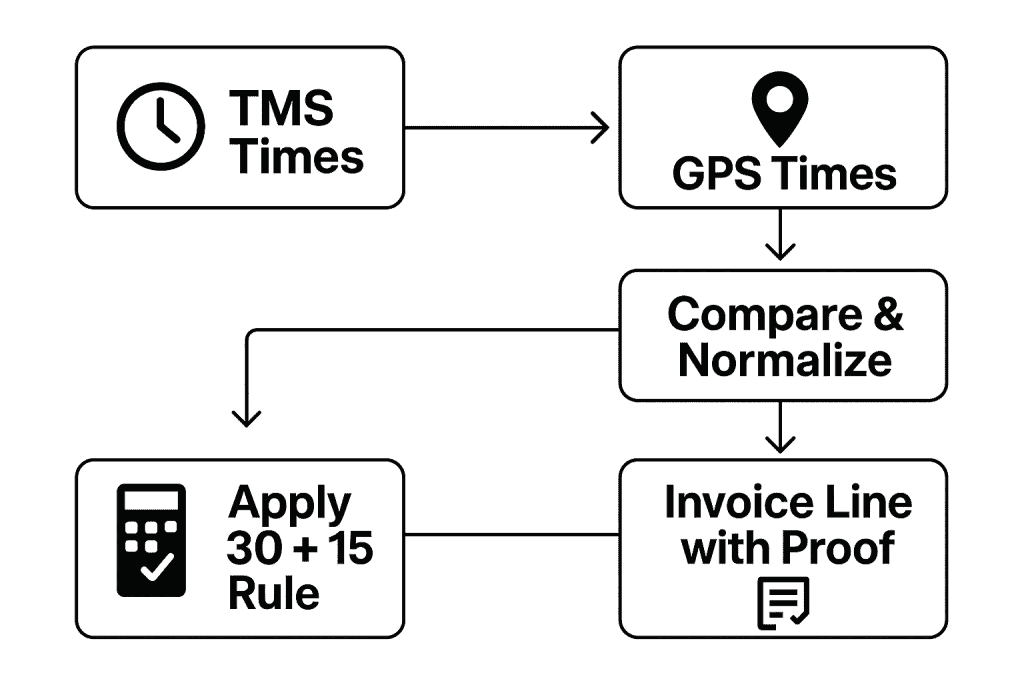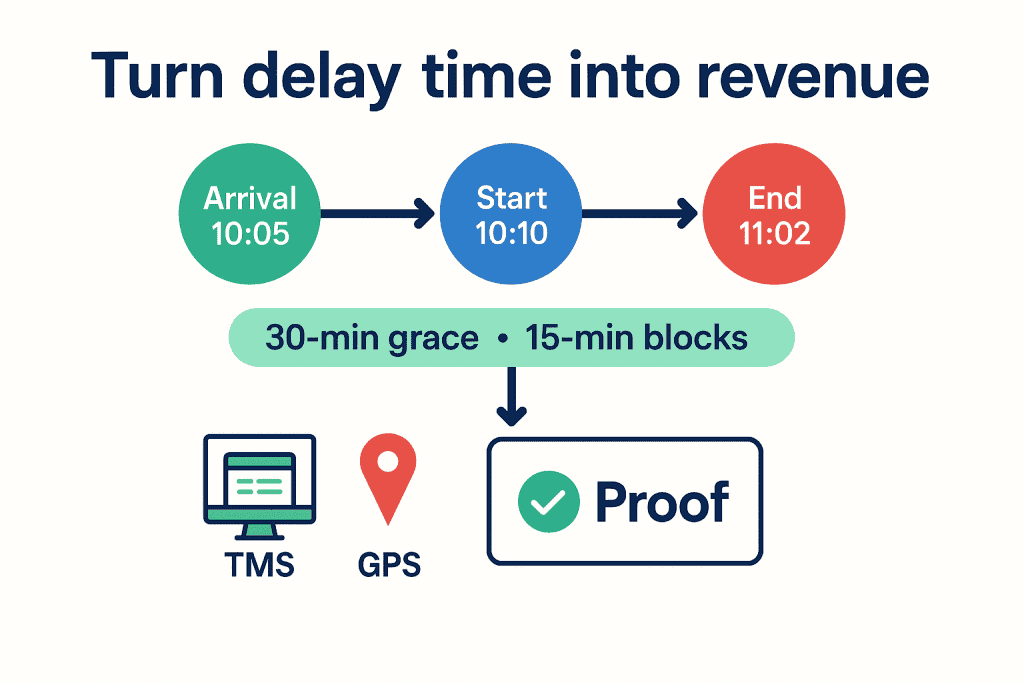Turn Delay Time into Real Revenue (Without Fights or Guesswork)
A carrier told me, “We know we’re owed delay fees… but we can’t prove them.”
Sound familiar?
A big retailer had an agreement: if a delivery runs over 30 minutes, a delay fee applies — and it increases every 15 minutes. Good on paper. Hard in life. Crews don’t carry stopwatches. Schedulers are busy. Finance wants clear proof. Without it, money stays on the table.
The Problem
Most carriers feel the delay cost, but can’t measure it. Why?
- Delivery start and end times live inside the TMS (like DispatchTrack).
- Arrival and departure times live in GPS apps.
- AR teams need a single, trusted timeline to bill fairly.
If the data doesn’t match, disputes happen — or worse, you stop billing for time you actually spent.
We’ve seen this many times. Good crews. Tight routes. But agreements get missed because proof is fuzzy. Our role: connect the dots and make proof automatic.
The Plan

Here’s how we built it:
- Pull time data from TMS (DispatchTrack) via API: delivery start and stop.
- Pull GPS time stamps for arrival and departure at the stop.
- Compare both sources to create a single truth (down to the minute).
- Apply business rules:
- First 30 minutes = included.
- After 30, charge every 15-minute block (with a per-block rate).
- Round fairly and charge precisely per the minute.
- Post the fee line item back to the AR system with proof (time in, time out, blocks, rate).
- Keep a clean audit trail with a simple PDF note for the retailer.
The Stakes
If you keep “estimating” delay time, you’ll:
- Lose revenue you’re contractually owed.
- Fight avoidable disputes with no clean evidence.
- Burn your ops and AR teams with manual checks.
When you measure time right, you’ll:
- Bill fairly and quickly.
- Stay compliant with your retailer’s agreement.
- Grow profit (no more money left on the table).
Before and After
Before: the carrier kept missing delay fees. Crews waited on long installs. AR had no clear proof. Payments lagged. Trust slipped.
After we connected TMS + GPS and added the 30-minute + 15-minute blocks rule, something simple happened:
- AR got a clean, minute-by-minute timeline.
- Invoices showed exact blocks and rates.
- Retailers saw proof — and paid.
The carrier became fully compliant, more profitable, and calmer. No drama. Just clear data.
Want this for your team?
Book a 30-minute walkthrough and see your flow mapped end-to-end.
FAQs
Q: What if TMS and GPS times don’t match?
A: We define a priority source (e.g., TMS) and use GPS as a sanity check within a small tolerance (e.g., ±3 minutes). Outliers flag for review automatically.
Q: Can we change the 30/15 rule?
A: Yes. The blocks and rounding rules are configurable by contract.
Q: Will this slow dispatch?
A: No. This lives after delivery, inside AR automation. Dispatch stays fast.


